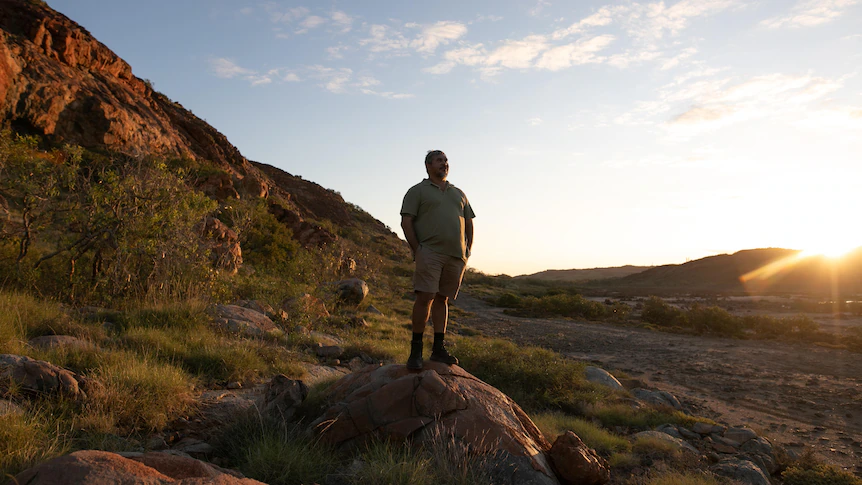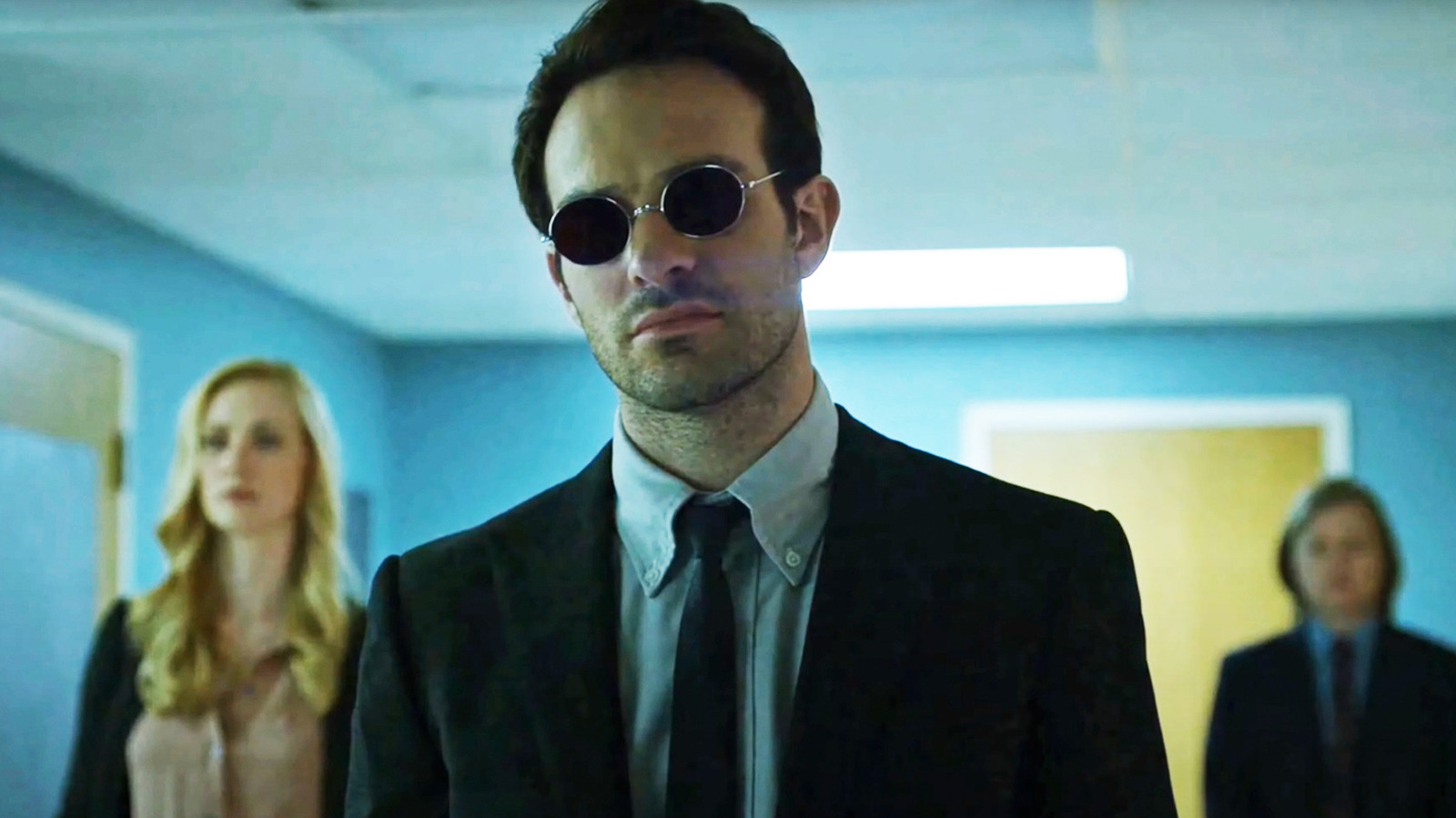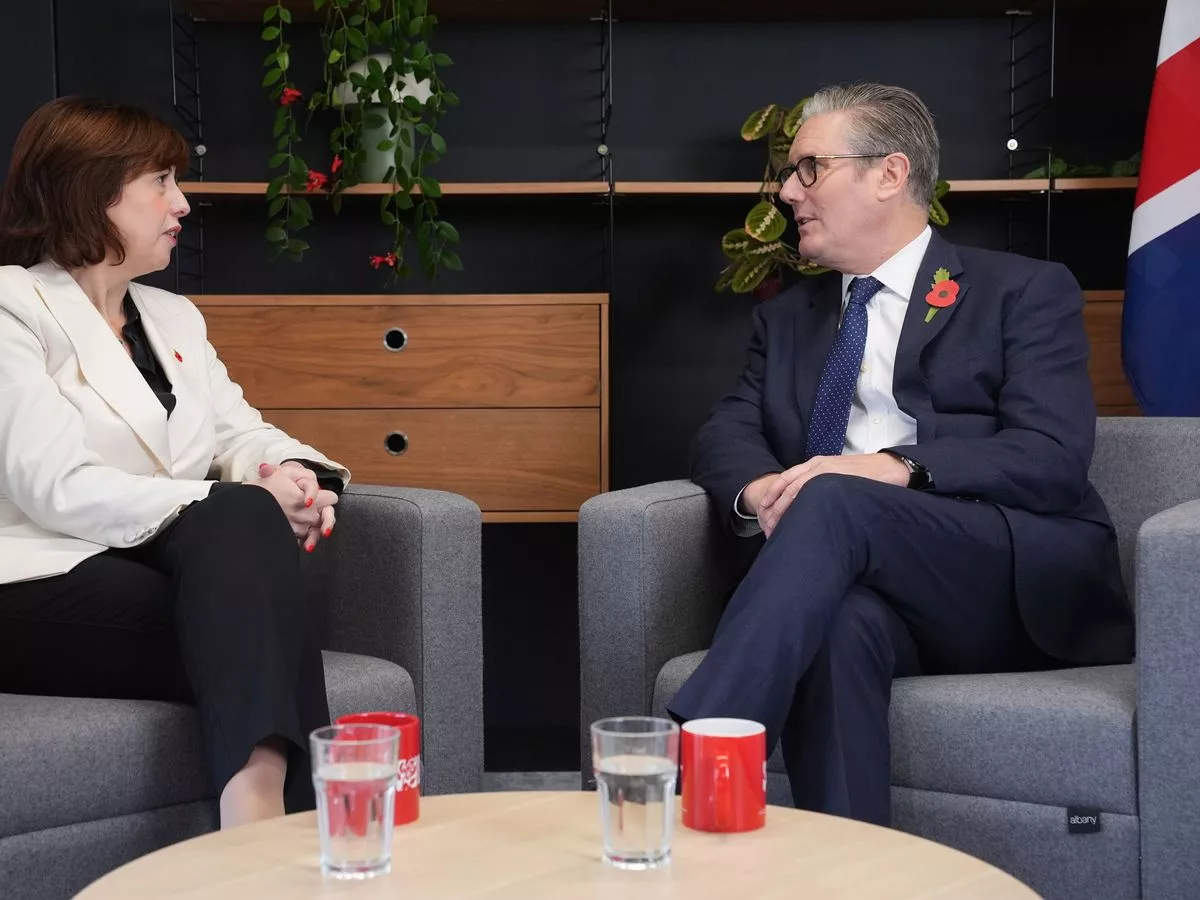Copyright abc

As the turquoise of the Indian Ocean laps at the rocky coast, Clinton Walker treks the same shoreline that's nourished his ancestors for thousands of years. The sun disappears behind the islands of the Dampier Archipelago on the horizon. "My people used to live there," Clinton points. Those islands weren't always islands, and the sea wasn't always here. Here at Murujuga, the red rocks are alive with more than 1 million artworks, and there are more ancient stories under the sea. It's a place where you can see directly into the depths of Australia's epic history. For Clinton Walker, culture is everything. A descendant of the Ngarluma and Yindjibarndi people, he carries knowledge his ancestors have passed on from one generation to the next for tens of thousands of years. Clinton runs tours around the narrow peninsula named Murujuga, which means "hip bone sticking out" in the Ngarluma-Yaburara language. He's sharing culture with the next generation of Aboriginal custodians as well as people who live far from here. Off the coast of Western Australia's Pilbara region, stories are still being uncovered on the seabed from a time when the islands were connected to the mainland and desert people became sea people. Up until about 11,000 years ago, people were living through an ice age. When that ended, the ice sheets melted and caused the seas to rise. Low-lying dry land all around our island continent — some of our well-known harbours, bays and reefs — were inundated with water and the mainland was cut off from Lutruwita (Tasmania) and New Guinea. Aboriginal and Torres Strait Islander people across this country have stories about a time when water engulfed the land. But the history of the people here extends way deeper, to a time that's almost unfathomable. Murujuga is a deeply spiritual place and is home to one of the largest rock art galleries anywhere in the world. It's believed to be the only place on Earth where the story of the people and their environment has been continuously recorded for more than 50,000 years. There are an estimated 1 million engravings, possibly even 2 million, spread over 1,000 square kilometres. The petroglyphs here have been made by chipping, pecking or scraping using stone to reveal the lighter coloured rock beneath. There are depictions of ceremony that are still practised today. They capture the animals and people's diet, which changed as the land changed. Some engravings are of animals that are rarely found today … … some that have not lived here for a long time, including Tasmanian devils… … and species that have long been extinct. For Ngarda-Ngarli, the engravings are a physical connection to the creation time and the people of the past. Ngarda-Ngarli is the collective term for the five traditional custodian groups in the area — Ngarluma, Yaburara, Mardudhunera, Yindjibarndi, and Wong-Goo-Tt-Oo. "[The artworks] are an encyclopedia," Clinton says. "It's like how we've got the internet and Google and social media and books, all of those different paintings, it's like that all rolled into one. Murujuga also holds the world's oldest known depiction of a human face, believed to be at least 30,000 years old. Visitors are asked not to photograph these figures which to custodians are sacred creation spirits known as Marrga — creators of the rules of life that humans were to follow — who left behind their teachings on the rocks. At Withnell Bay, all this natural beauty and rich culture lies beneath the glow of Woodside Energy's Karratha Gas Plant flare towers. Despite Murujuga Cultural Landscape's significance to thousands of generations of continuous care and use, something which was recognised a World Heritage Listing, it is surrounded by some of our country's biggest mining and gas industries. Walking this country with Clinton Walker, there's a surprise around every corner. Within just a few minutes of leaving the four-wheel drive track, Clinton finds a collection of old stone tools — a knife, a blade for skinning, a spearhead and a grinding stone. "This was our hardware store," he says. "You still find new stuff, so that's the wow factor." There are dozens of turtle engravings all around the rocks in this bay. Upon first glance they appear to be outlines. But Clinton points out their uniqueness, each one used by elders to pass down intimate knowledge of the animal and its life cycle — their insides, their eggs, their mating and their tracks. The engravings are commonly referred to as rock art, but for Clinton that's an understatement. The turtle has been a key food source here ever since the seas rose, but the animal is also a perfect example of the complex web of interconnection — how in Aboriginal cultures everything is connected. "It's passing down knowledge. So by knowing what a turtle trail looks like, it tells you what's going to happen next in the seasons, how to cook it," Clinton says. "The turtle is connected with the tides, the tides are connected with the moon, so they're also a seasonal calendar." Nearby, there's a grand escarpment called Thatharruganha — The Dreamtime turtle. Clinton says in their songline it was the very first sea turtle and it is resting in this huge rock formation. Songlines, he explains, are stories connected to ceremonies and places. "A freshwater turtle came from inland, it was looking for a nesting site, but its legs didn't work in saltwater. Then it transformed into a sea turtle. "The boulders all around us are eggs. When the eggs hatched, they were all the different species. "That's how all the turtles came to be." Clinton says songlines are one of the other things that make this place so special in our nation's story. "From my people's cultural knowledge, this is where everything started. "Here, Murujuga is home to my people's culture and is also the beginning point for songlines, which is home to other people's cultures." Songlines are a map of a story throughout the landscape. This knowledge is then passed on to other groups and carried on throughout the land. At the top of this 40-metre escarpment, a stone stands tall. It's a marker, Clinton says. About 80km south of Murujuga, Yindjibarndi law man Vince Adams speaks of another standing stone on top of a hill. People have moved it there to notify others that it's a place of significance in a songline. "It's like when we're travelling to different parts of the world we hop off an aeroplane, we get introduced through Customs, we get introduced through people that are knowledgeable of country, we have tour guides that guide us around places. "Our culture is no different, Murujuga is no different. "To access those places, you meet the people from there." Storylines connect Murujuga to places far and beyond. "All our songlines, all our connection to the country comes from the animals — they were here first before us. They've all left their footprints. "These footprints, these stories lead people to places of survival. "A songline is something that helps remind travellers where they need to be at a certain time, how they need to get there, but most importantly, when they get there. "They tell us waterholes, they show us hunting grounds, they tell us what's in hunting grounds, what we can hunt for when we're in those hunting grounds. "Everything ties into each and every other story." Storytelling is layered. Young people get to peel back one layer of the onion, and then as people get older, earn respect and go through law, they earn the right to peel back more layers. Vince likens the beginning of this learning to the 'she sells seashells' tongue twister — great importance is placed upon singing them and passing them on correctly. They have to be sung precisely because they travel across many different language groups. One tiny change to the wording can completely change the story. Stories from the ocean floor As Vince began practising law, there was one songline that always left him with questions. It was a story that couldn't be sung, but he didn't know why. "Murujuga story line comes from an ancient story songline, story songlines that we don't sing today or practice today," he says. His elders called it 'poison' and eventually it became known as the 'half and half' songline. Only in the past 10 years has archaeological research been able to help fill in a few more pieces of that puzzle. The other half of that story lies at the bottom of the ocean. "Together and marrying the you know of old science, my culture and new science, university. "By putting two and two together, the missing jigsaw puzzle came to place. The reason why we can't see that … is because it's underwater." The law Vince practises connects him to places all around here. This country was a special place, a freshwater spring where he used to camp with his siblings and cousins. It's an important law site. Harding Dam has been cut out of the rocks, a dam that Vince says provides unreliable fresh water and is a permanent scar in the landscape. As he walks through the scrub, pointing out ant nests and stone tools, he stops in his tracks. A rare bird is making a call. He looks around. He listens. Suddenly, a gush of wind picks up through the valley. Different birds have different meanings, he explains. "Danger," he says. "He sings out to us warning us that something bad is going to happen for people. "Country and animals have a way of telling you the stories of the land because most time land can't speak for herself so she needs support from us, the living." Vince says the wind is also country's way of smelling who we are. He starts speaking in language, singing in a rhythm that seems to emulate the sounds of the land. "I explained to ngurra (country) that we are just visiting, we are from country even though we might smell different, and was explaining to country that she's the boss, she stays here, she looks after this place, we are now leaving. "We have to go now." He says there's a reason Aboriginal people have such an intrinsic connection to the places around them. As the oldest surviving cultures on Earth, their spiritual connection extends way beyond the histories widely taught in schools — the Egyptians, ancient Greece or ancient Rome. "After generations and generations and centuries and millennia of culture and history, we still practised the same law. "When Caesar conquered and developed and made everything, that law has changed, quite considerably, to where we are today. My law hasn't, it's still been the same, never changed." Vince is the deputy chairperson at Murujuga Aboriginal Corporation which has members from the area's five traditional custodian groups. The corporation jointly manages Murujuga National Park with the Department of Biodiversity, Conservation and Attractions (DBCA). While there are many parts of culture that cannot be shared with outsiders, letting the world in is Vince's way of helping to protect his culture from one of the greatest threats. "There's layers and layers, millenniums of stories being told on the same rock. One of the tough truths to face, he says, is it's hard for young people to juggle everything the modern world offers, including juggling jobs and setting up their family, while also staying connected to culture. Babies use phones before they learn to speak language, he says. "Unfortunately we're losing our foundation, which is the most incredible thing of any infrastructure. "It's all going to be digital one day. Guess what? When all else fails the rock art will still be there." Vince's hopes lie in the young rangers coming through MAC, the next generation of caretakers who protect the engravings and pass on knowledge to people from far and wide. It's what keeps him going. It's also what makes him realise his job has only begun. Rangers Sarah Hicks and Caleb Pitt-Cook are just beginning to peel back the layers of knowledge. It's all around them at Nganjarli, a heavy concentration of engravings on a 40-metre rock wall. "In my language it means sacred place or gathering area," Ngarluma man Caleb says. Visiting groups have long been travelling here to learn and practise these laws. "So when our language groups would come to the area they would burn a fire just outside where the rocky outcrop is, and then traditional owners would come out and bring them in, because you can't just walk into anyone's country without permission." As rangers Caleb and Sarah are both passionate about learning and spreading awareness amongst the wider community. But they're also taking an active role in preserving their physical history. Using more than 20 stations that measure dust, air, precipitation and emissions, rangers monitor for poor air quality and are collaborating with scientists to figure out if industry is speeding up the weathering of petroglyphs. As Ngarluma and Wong-Goo-Tt-Oo woman Sarah Hicks walks along, she snaps off a honey hakea flower and reflects on the bush food and medicine her ancestors used to survive. She thinks about the generations of women who've given birth on this country long before hospitals existed. Sarah is determined to gain more women's knowledge. "It's important to learn and understand it because eventually we're not going to have elders here. "It's really cool because it gives you an understanding of who you are and the role you play, even though you're only young." When it comes to the beauty and significance of the region, it's hard to ignore the giant noisy elephant nestled within it. Murujuga is right alongside some of Australia's biggest industry — industry that the nation's economy has long relied on. There's the huge Woodside Karratha Gas Plant. There's the Yara fertiliser plant and another Pluto gas plant currently under expansion. And there's Rio Tinto's iron ore mines and salt operations. The Burrup Peninsula is also home to a huge port that facilitates the transport of these resources to the rest of the country and the world. The mining region is one of the most expensive places in Australia to live. Murujuga Cultural Landscape was granted UNESCO World Heritage listing in July. Two months later, the Federal Government gave the final approval for a 50-year extension to the North West Shelf gas project, expanding its life to 2070, despite earlier advice that pollution from Woodside's gas plant may be causing irreversible changes to ancient rock art. Vince Adams says the industry can't be undone and it's going to continue with or without traditional custodians' involvement. But he's optimistic the World Heritage listing will give them more of a say. "These things have all happened, unfortunately. "We've got it now, a little bit too late people might say and and our members have said far little far too late, we needed this 30 years ago. Unfortunately these are the cards we're dealt with." 'It's a world story' that needs to be protected This is not just Aboriginal history, Vince says, but the whole nation should be proud of it. He wants an end to the division. "That ownership has to go back to the people. Doesn't matter who you are, whether you're Indigenous, whether you're non-Indigenous, whether you're Ngarluma, Yindjibarndi, Yaburara, whatever you are — you're a person, you live, you work, you play on country. "Australia has to look after that rock art. That's the only way I can put this so that we Australians get to have a bit of pride in something that's in our country and that's the oldest living culture anywhere in the world. Anywhere." The Colosseum, Machu Picchu and the Great Wall of China are considered among the new Seven Wonders of the World. Clinton Walker says Murujuga is up there. "We've got to stop looking at the past as a negative thing and we've got to start embracing what we have here in this country, which is the most ancient, oldest living culture on planet Earth. "That should be something that we could, we should be proud of." "This is probably the eighth wonder of the world.". "It's a world story." Clinton says modern society has a lot to learn from Indigenous knowledge. "Too often people, they look a generation or two ahead and they don't plan beyond that. And if you look at our current government, they only go for the term that they're in, which is only four years. "Indigenous populations look at what we're doing today and how that's going to affect not just our grandchildren, but our great, great, great, great grandchild." Aboriginal culture, he says, has always been about setting up for people they don't know, for people they will never meet. "We don't know who they are yet, but we know that they're going to exist one day sometime in the future when we're long gone and we're trying to set them up. "Indigenous knowledge is what's going to save the Earth." Reporter and photographer: Margaret BurinDrone photographer and videographer: Chris LewisDigital producer: Georgina PiperEditor: Matt Liddy



